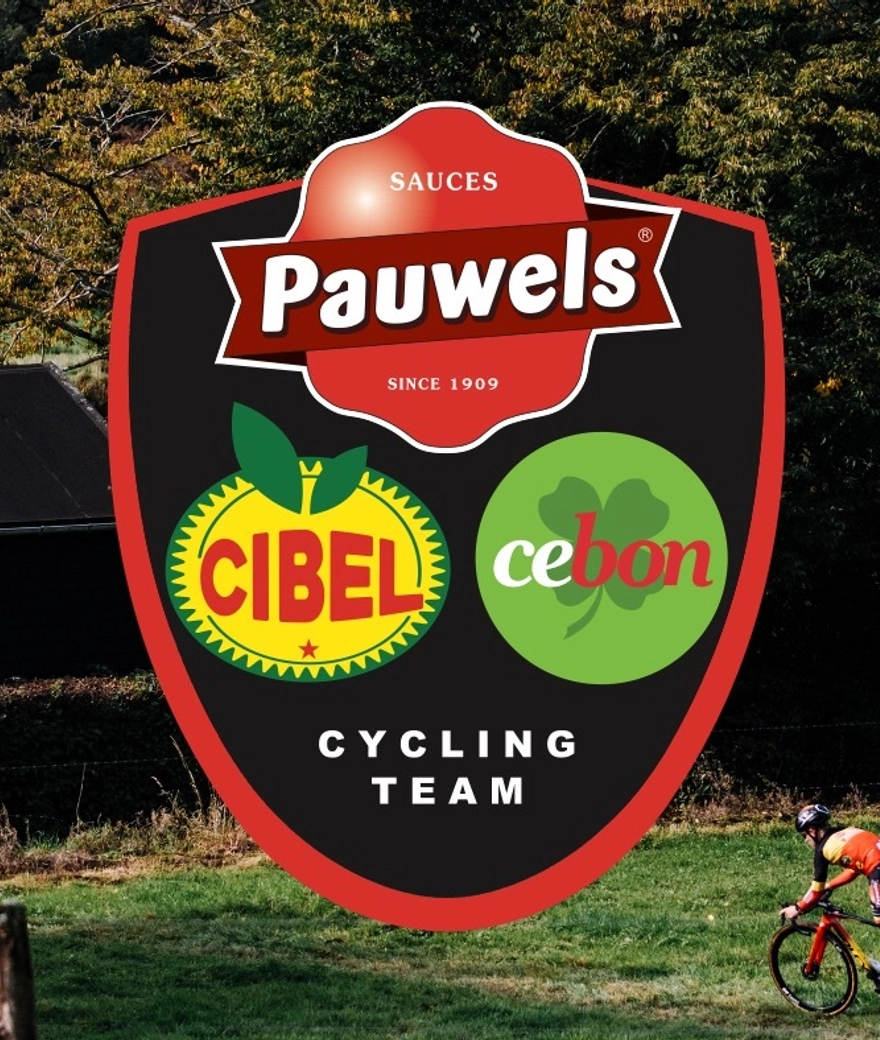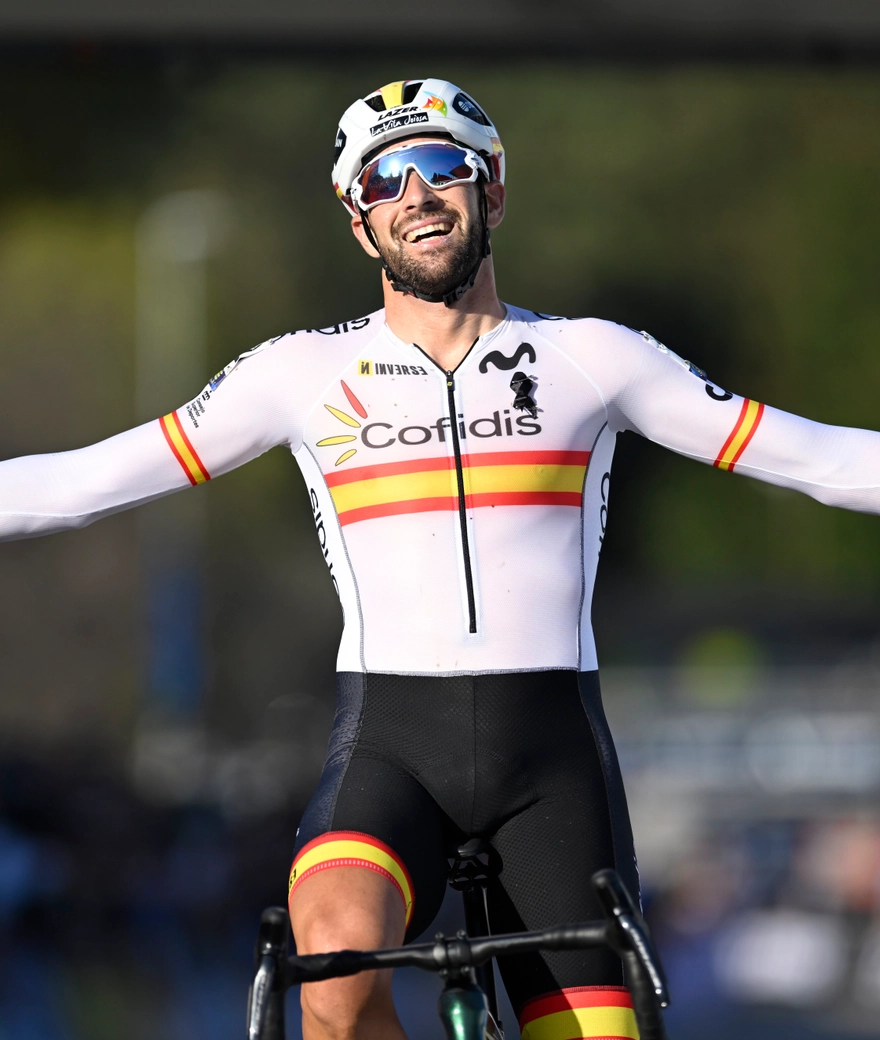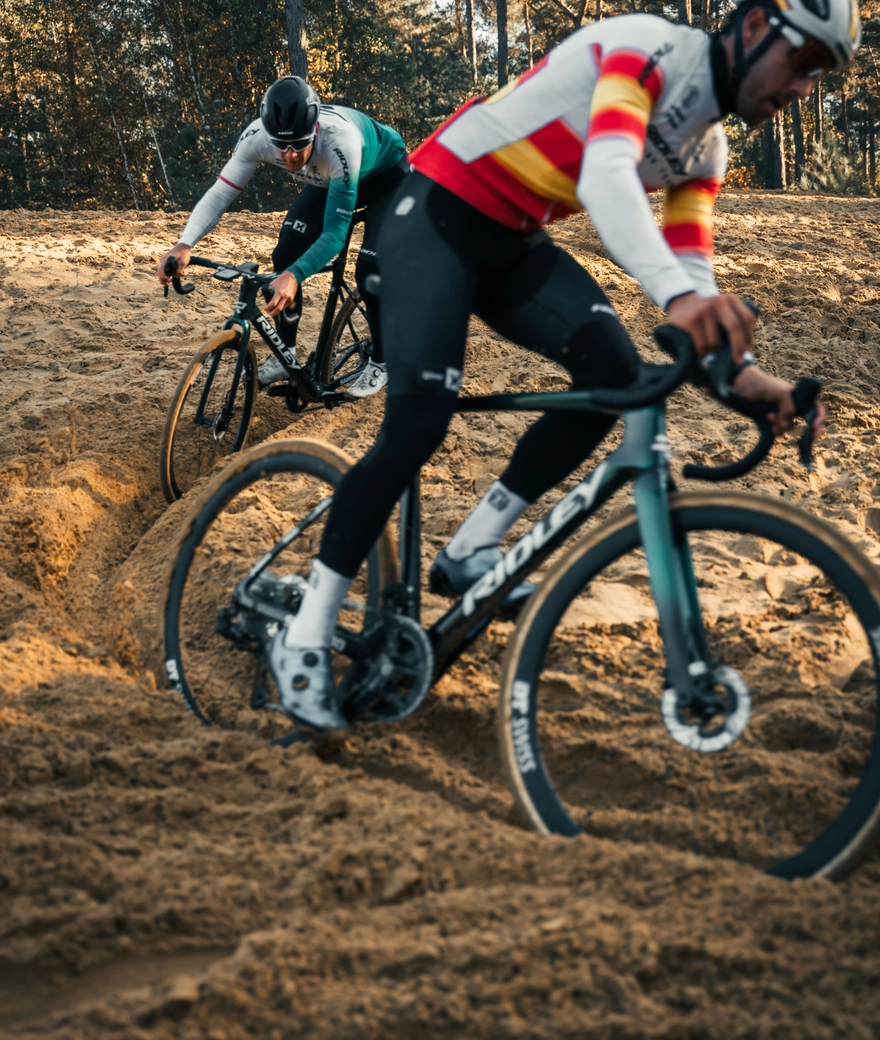This is how to get the most out of your mountain bike!
The very first choice is also the most important: the right bike! Just as on the road and in gravel, you have several types available in mountain biking. The best-known and most sold model is the cross-country mountain bike. It is a light and agile bike where the focus is on the classic cycling experience over better-running trails. From forest trails to beaches, with this bike you are armed everywhere.
Such cross-country mountain bikes usually only have front suspension, referred to as ‘hardtrail’. At Ridley, with the Ignite (also available in aluminium) and the Probe RS, we have two bikes that belong in this segment. The Ignite is a lightweight with playful handling, while the Probe RS is the best bike in its class. RS therefore stands for Racing Sport. The Probe RS features an insanely light frame weight and has progressive geometry.

Ignite SLX
Ignite SLXThe Ignite SLX is the top model in our hardtail, cross-country mountain bike range.
Discover the Ignite SLX here
At Ridley, our Raft combines cross-country performance with downhill fun. The 100-millimetre suspension travel is designed with performance in mind. Thanks to the nimble handlebars and steep seat angle, you also have razor-sharp handling. By the way, you can also go for 120-millimetre suspension. That way, you can further improve handling at higher speeds.

Raft XC
Raft XCThe lightweight Raft XC is a full suspension MTB with 100mm suspension travel. Its 100mm rear suspension is designed with performance in mind, a remote lock out lets you sprint with direct power transfer to the rear wheel. The agile handlebars and steep seat angle guarantee razor-sharp handling and power transfer. Thanks to the longer wheelbase and slacker headtube angle, you won't lose time on descents either.
Discover the Raft XCMountain bikes for specific use
When it comes to gearing, you will probably notice that there is only one blade at the front. However, in a previous era it was the norm to have two or even three front gears on your bike, but with the introduction of the 1x11 and later the 1x12, this is no longer really necessary. In principle, the range of these gears is enough to get going anywhere.
Once you have chosen the right bike for your challenge, it is a matter of testing everything thoroughly. Put the saddle at the right height (possibly with the help of a bikefit), test the brakes and make sure everything is tight. The click pedals are also important here. When you find yourself on technical terrain in the countryside, it's better to be steady in the bike.
Another example of a handy feature is the ‘remote lock out’. With this lever you can lock the dial at the top of your fork, allowing the suspension to stay in a fixed position. on flat terrain or uphill, this way you don't waste energy due to the movements of the suspension.
Tyres and wheels
As in any off-road discipline, tyres and wheels are also very important on a mountain bike. It starts with the size of a wheel, as in the 1990s people prided themselves on 26-inch, today 29-inch wheels are the standard. Riders gladly gave up their agility in exchange for more speed on the long straights. With smaller frame sizes, sometimes people still go for the compromise with the 27.5-inch wheels.
A second question is the choice of tubeless. This revolution remains fodder for debate. The big advantage of tubeless, is that you no longer have an inner tube and thus notice a lower rolling resistance. Specialists also often point to the excess grip and comfort as an asset. Moreover, the risk of punctures is lower, although this can still not be ruled out. A puncture, caused by crushing of the inner tube between rim and outer tyre, is of course out of the question in the absence of inner tubes.
Next, we look at the tyre width. A wider tyre is logically heavier and slower, but gives you more grip. For cross country, people usually opt for 1.9 to 2.3 inches, for trail they go from 2.3 to 2.5 inches and for downhill they add 0.1 inch. The tread often depends on the surface. If the surface is dry and not too technical, short studs are sufficient. If the ground is loose, these studs are spaced a bit further apart and are slightly larger. In muddy conditions, riders go for more grip by using high, thick studs. Sometimes they choose a combination of these options, depending on the terrain the rider is focusing on.
Tyre pressure
When it comes to tyre pressure, we recommend taking a little more margin with an inner tube anyway. For tubeless tyres up to 2.5 inches, the recommended pressure is 1.8 bar, if you go wider, 1.4 bar is also possible. If you use an inner tube, it is best to add 0.2 bar to build in security and minimise the risk of punctures. Another factor in tyre pressure is the weather conditions. In wet weather, it's best to go a little lower, because that way you have more grip and don't slip. The rider's weight is also a factor. For every 10 kilos you should still add 0.1 bar extra.
Whether you take one drinking can or go for multiple drinking cans will depend on the heat and distance/time of your venture. A classic rule of thumb says you should drink at least one drinking can per hour; other specialists speak of 125 millilitres every 15 minutes. As for nutrition, it's best to go for 40 to 60 grams of carbohydrates per hour. Of course, it's best to test this out. Not all cyclists tolerate all gels or bars. There are also many differences in taste.
In nature, an accident is never far away. So make sure you at least have the right tool keys with you to straighten a saddle or unscrew a wheel. A spare tyre with repair materials is never a luxury either. If you do have a puncture, you will still be able to continue after a repair.
On the road
All set for your ride? Then use all the simple tips on the road! Brake calmly and in a controlled manner when necessary, so your bike does not come to a sudden stop. Disc brakes are more powerful than you think, you better take that into account. On the road, it is best to shift your weight so the centre of gravity remains central. Place your weight back on a descent and put pressure on the rear leg when entering a sharp turn.
Do you really want to get the most out of yourself and your bike? Then try performing a wheelie. By bending your arms and lowering your chest to the handlebars, then push off and lift the front wheel in one motion. Need even more of a challenge? Then venture into a ‘bunny hop’, where you jump over obstacles. It's best to start with a small branch and then go wider and wider. Is this no trouble at all for you? Then you could also try your hand at a ‘jump’ or a ‘whip’.
KMC Ridley MTB Racing Team
In recent years, our expertise in mountain biking has grown enormously thanks to our collaboration with the KMC Ridley MTB Racing Team. The riders are active at the very highest level and team owner Bart Brentjens was the very first Olympic champion in mountain biking at the time. Thanks to international stars like Yana Belomoina and Martins Blums, we get feedback from the absolute top and can continue to innovate in this discipline as well. The riders of the KMC Ridley MTB Racing Team ride both the Raft XC and the Probe RS.




